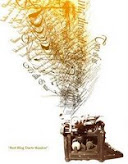 In 30 BC the Romans took over Egypt. Of course, this affected Egyptians in many important ways, but I will only talk about how it changed Egyptian art. You have already read that Egyptians used art (paintings, carvings,and sculpture) to help them in the afterlife. You know that the art was not realistic but idealized and showed perfect bodies in perfect proportion. You have also read about how Akhenaten created his own art movement, called Amarna Art, which featured more realistic portraits.
In 30 BC the Romans took over Egypt. Of course, this affected Egyptians in many important ways, but I will only talk about how it changed Egyptian art. You have already read that Egyptians used art (paintings, carvings,and sculpture) to help them in the afterlife. You know that the art was not realistic but idealized and showed perfect bodies in perfect proportion. You have also read about how Akhenaten created his own art movement, called Amarna Art, which featured more realistic portraits.When the Romans took over, they brought a classical style of art with them. This can be seen in the mummy portraits that were found in the Fayum (notice the map) and, to a lesser degree, throughout Egypt.
 At first portraits were painted during a person’s life and then, after death, attached to the mummy. Later portraits were only created after a person died.
At first portraits were painted during a person’s life and then, after death, attached to the mummy. Later portraits were only created after a person died.The portraits showed only the face and possibly the shoulders. The person always faced forward, which is different from other Egyptian art in which people always faced sideways. You’ll notice the big, open eyes and the fancy clothes worn in the portraits. Many even showed jewelry and flowers.
 A portrait was painted on a wood panel and tucked into the wrappings of the mummy. The portrait’s face was lined up with where the person’s real face was.
A portrait was painted on a wood panel and tucked into the wrappings of the mummy. The portrait’s face was lined up with where the person’s real face was.If you compare the Fayum Portraits with artwork from earlier Egypt, I think you’ll see a huge difference. There’s not much more I can say that you won’t notice by looking at the two paintings below.

 That’s it for Egyptian art (for now, anyway). Check back tomorrow for something new.
That’s it for Egyptian art (for now, anyway). Check back tomorrow for something new.Return to main page.








1 comment:
Thanks for these great information
Post a Comment